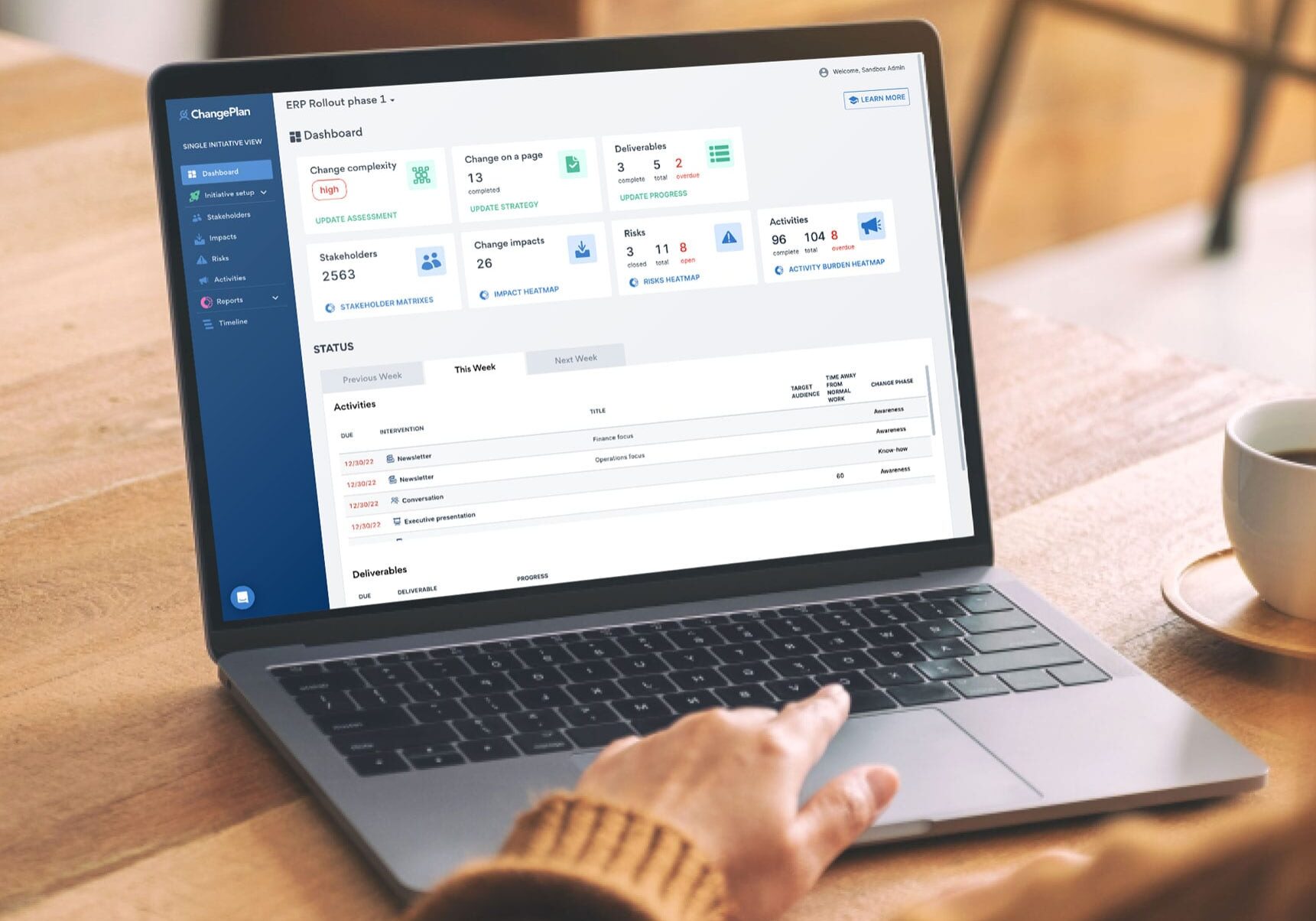Quantitative measurement of your change efforts goes a long way in proving change management was a worthwhile investment.
Change managers often despair because their hard work is sometimes considered “nice to have/fluffy.”
Qualitative data almost always supports change intervention as worthwhile, making the transformation experience easier for those adopting changes. But when budgets are tight, we need to measure more than smiley faces, so what do you measure to support change success?
A previous article discussed ways to present data – but what do you measure?
Each project is different, so there are no concrete rules, but here are some ideas and suggestions.
Report on what is outlined in the business case.
The business case will describe the change’s reason and the proposed solutions’ benefits. In a large project team, your business analyst may have already done this, but if you don’t have a BA, or it hasn’t been done, roll up your sleeves and get your calculator out.
- What is the cost of sticking with the current solution?
- Are there time and efficiency savings – or additional costs moving to the new working method?
- Factor in the cost of training, but also add up the time saved from increased productivity.
- Add up the time away from BAU activities required to adopt the change.
Usually, funds are allocated to a project once the business case is approved, so tracking the benefits and costs outlined in the business case keeps you on track.
Add up FTE Impact.
Provide metrics in ‘Full time employee’ impact. When many people are involved, and they’re all earning different salaries, perhaps working different hours, it could be hard to put a dollar value on a benefit. The impact of FTE is useful and appreciated by leadership teams. If a new operating model will save every employee 20 minutes a day, multiply that by the number of people in a team and calculate the yearly number. If you say the new operating model will save the equivalent of two full-time employees in the contact centre, that packs a punch!
Take care! Presenting FTE savings can make people fearful of losing their jobs. Smart change managers include details of how impacted employees will use the time saved, such as having better customer conversations.
Think it through…
What do the numbers really mean? So what if 3000 people visited your beautiful SharePoint page, what does that mean? Why does that matter? It matters if self-serving instruction videos or consulting online help meant a reduction of calls to the service desk. It matters if only 300 people visited last time, so you can demonstrate the workforce is becoming more pro-active and accepting of change. For each metric ask yourself, ‘why does this matter? What does this mean? What will happen now?’
We’ve got you covered.
Compiling and tracking these change management metrics is a huge task. We designed our ChangePlan software platform to track what matters as you enter it, and where it really shines, is that it can aggregate these change management metrics at a portfolio or enterprise level. Something even the most Excel savvy change manager would struggle to do. Join us for a demo and we’ll show you how you can prove Change Management is essential in your organization.











